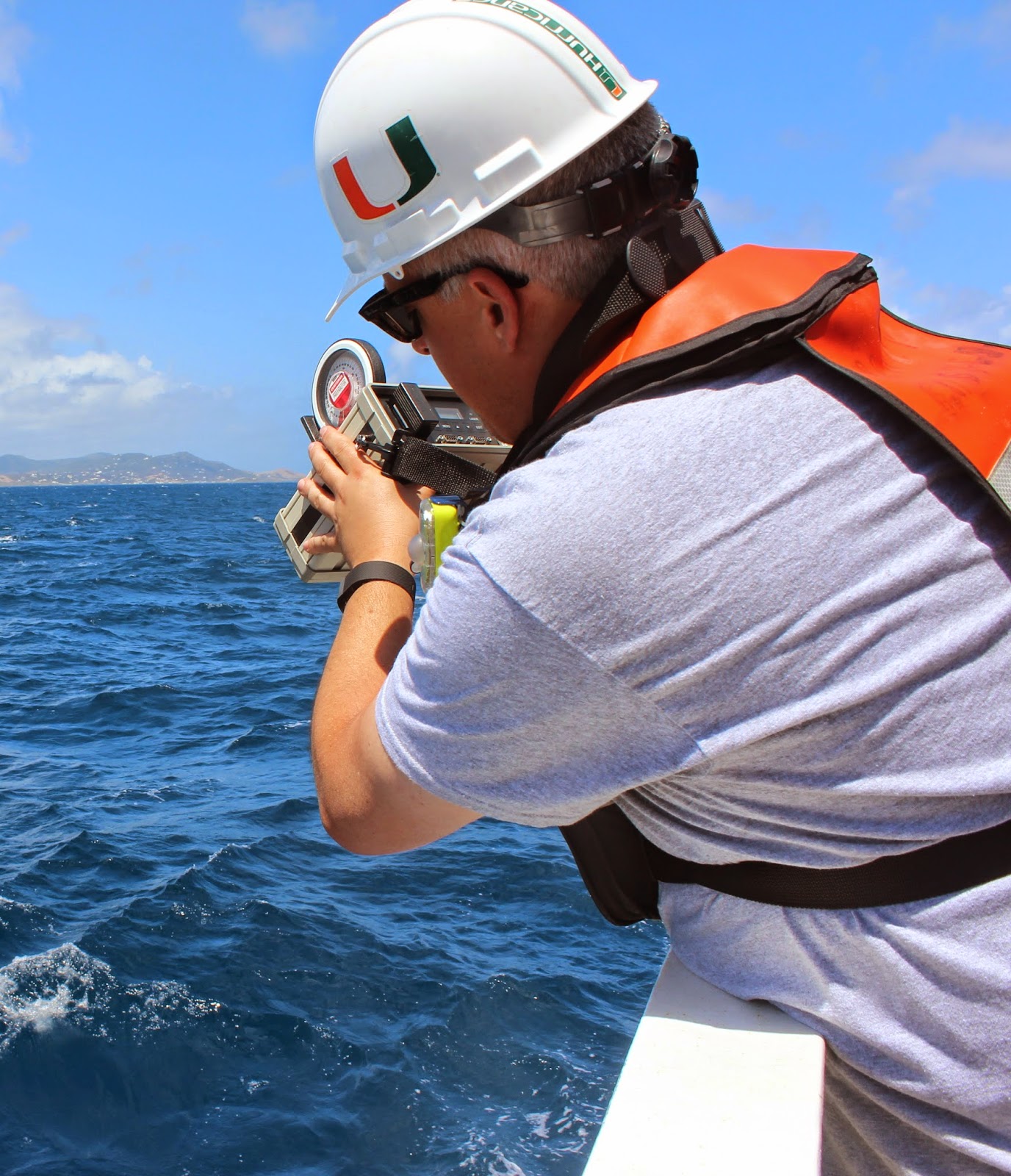Welcome back!
 |
| Nancy Foster in port, St. Thomas, USVI |
I hope you enjoyed the first few posts, and there is more to come! We will be at sea until June 3rd!
Our research-cruise
is made up of 4 "legs" --one leg = two week periods, between which
there's a port stop. Each leg has a different science party, with some people
leaving, others coming aboard, and a handful that stay the whole time. As you
can imagine, we had to play Tetris with everyone's schedules! This
"leg," the science party is made up of 13 scientists + engineers that
fix everything all day long +the deck department that keeps the ship + equipment running, the chefs that feeds everyone (thank you!), + NOAA corps officers that drive the ship and handle day to day logistics. You
can learn a lot about this ship and some of their past/current missions at
their website (or "Like" them in their FB): NOAA SHIP NANCY FOSTER.
Today we
will start to feature our scientists on our blog and learn a bit about them and
why they decided to join us in our cruise through the Caribbean! Today we will
start with Dan Otis.
Dan is a
“post-Doc” (aka Postdoctoral scholar) at the University of South Florida’s
College of Marine Science in the Institute for Marine Remote Sensing (IMaRS) in
St. Petersburg, FL.
Dan is
measuring remote-sensing reflectance. In between his continuous filtering of
water, he explained a little about it: “Remote sensing reflectance is just the
ratio of the amount of sunlight reflected by a surface (the ocean in this case)
to the amount of downwelling or incoming sunlight. In this case it's around 2%.
For a solid surface like concrete on the sidewalk, it might be 50% or more. The
ocean is very “dark” in this sense because most of the incoming light is
absorbed. We are also measuring reflectance by wavelength, meaning how much
blue light is reflected...how much green light, etc.”
These
measurements tell us about phytoplankton pigments, plankton in the water, and
how much light is being absorbed and reflected. He uses an instrument called a
spectro-radiometer, which measures individual wavelengths of light. On station,
he takes 3 sets of measurements at 45 degree angles -
a) calibration using a white card as a standard
b) measurements of the
water:
The instrument measures the color of light reflected
from the water surface as a ratio compared to incoming skylight. His measurements are collected
during the day hours can be used to validate ocean color satellite estimates of
chlorophyll made at the top of the atmosphere.
Another part of Dan's @sea duties involve filtering water from the CTD's bottles. The "CTD package" is lowered at each station and is 'cast' down to a certain depth (200m if possible). Once recovered, the CTD has many bottles (gray bottles on left) that collect water at different depths. Dan collects water from the surface bottle and filters and filters and filters water in order to measure the absorption of light by phytoplankton.
We hope Dan's measurements can enhance the limited knowledge we have about remote sensing in this part of the world!
 |
| CTD package being recovered by NOAA Corps officers Jim Europe, Aras Zygas and Alexis Sabine (DPNR) |




Nice hard hat, Dan!!!! [|_|]
ReplyDeleteIts all about the U!
Delete